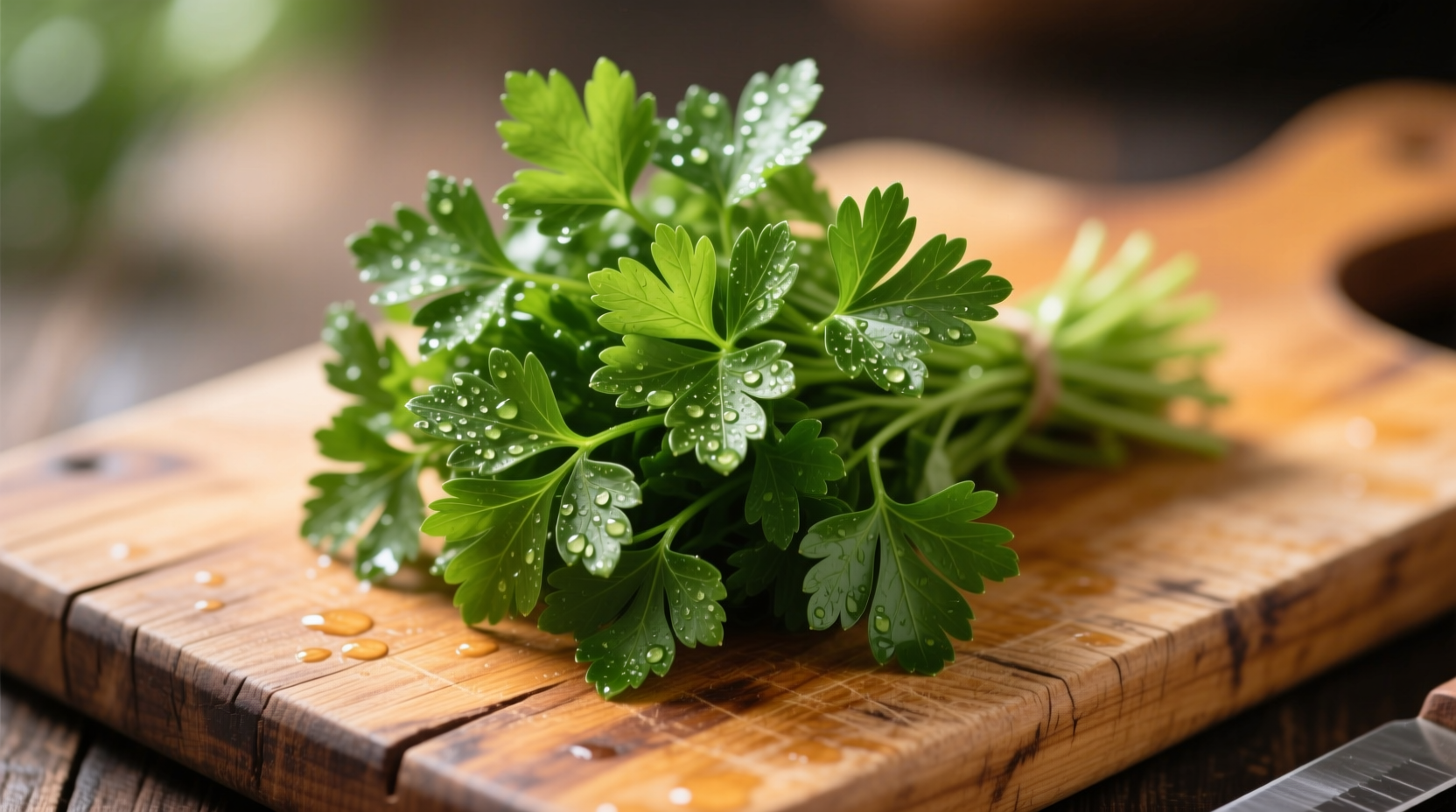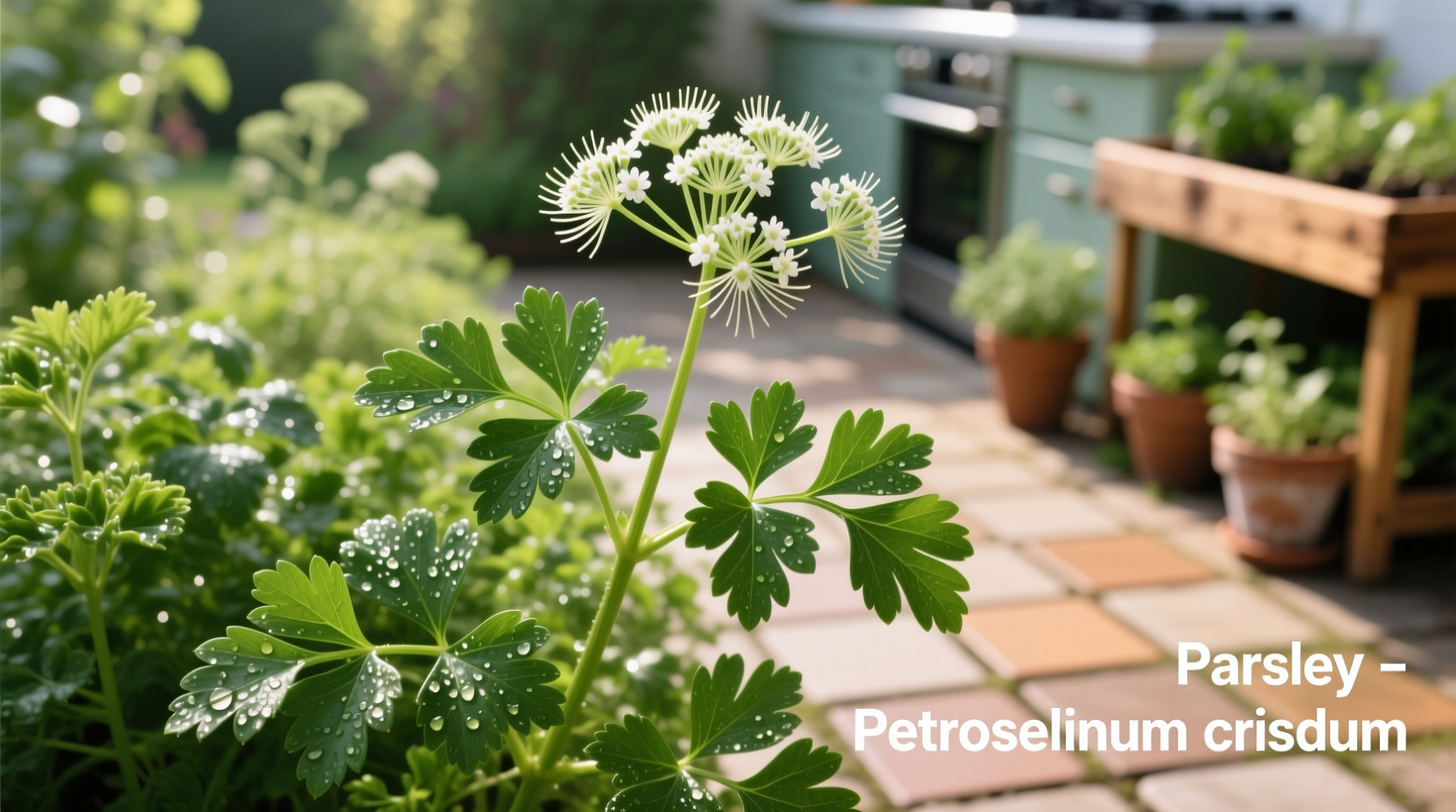The Essential Guide to Understanding Parsley
When you reach for that bundle of green leaves at the grocery store, you're handling one of history's most enduring culinary companions. Far more than just a plate garnish, parsley delivers remarkable flavor complexity and impressive health benefits that make it indispensable in kitchens across the globe. Whether you're a home cook looking to elevate your dishes or a gardening enthusiast wanting to grow your own supply, understanding parsley's true potential transforms how you use this humble herb.
Botanical Identity and Visual Characteristics
Parsley belongs to the Apiaceae family, which includes carrots, celery, and cilantro. Its scientific name, Petroselinum crispum, derives from Greek words meaning "rock celery," reflecting its natural habitat in rocky Mediterranean regions. The herb features bright green, compound leaves growing in clusters from a central stem, with a distinctive fresh aroma that becomes more pronounced when crushed.

Two Distinct Varieties: Choosing What's Right for You
Understanding the difference between the two main parsley varieties helps you select the perfect type for your culinary needs:
| Characteristic | Curly Leaf Parsley | Italian (Flat-Leaf) Parsley |
|---|---|---|
| Flavor Profile | Milder, slightly grassy | Bolder, more robust, peppery |
| Texture | Crisp, ruffled leaves | Smooth, flat leaves |
| Culinary Best Uses | Garnishes, salads, tabbouleh | Sauces, stews, Mediterranean dishes |
| Storage Life | Longer (up to 2 weeks) | Slightly shorter (1-1.5 weeks) |
Historical Journey: From Ancient Remedy to Kitchen Staple
Parsley's story spans millennia, evolving from symbolic and medicinal uses to culinary prominence:
- Ancient Greece (500 BCE): Used as a victory symbol at athletic competitions and placed on graves as a protective charm
- Roman Era: Employed as a breath freshener and digestive aid, often consumed after meals
- Medieval Europe: Initially avoided due to superstitions, later embraced for medicinal properties
- 16th Century: Gained culinary acceptance across European kitchens
- Modern Era: Recognized globally as both a flavor enhancer and nutritional powerhouse
Nutritional Powerhouse: Science-Backed Health Benefits
Research from the USDA National Nutrient Database confirms parsley's exceptional nutritional profile. Just one-quarter cup (15g) of fresh parsley provides:
- Over 200% of your daily vitamin K requirement - essential for blood clotting and bone health
- Nearly 60% of daily vitamin C - a powerful antioxidant supporting immune function
- Approximately 15% of daily vitamin A - crucial for vision and immune health
- Significant amounts of folate, iron, and potassium
Studies published in the Journal of Agricultural and Food Chemistry highlight parsley's apigenin content, a flavonoid with potential anti-inflammatory properties. Unlike many herbs that lose potency when dried, parsley maintains remarkable nutritional value when fresh, making it particularly valuable in raw preparations.
Practical Culinary Applications: Beyond the Garnish
Professional chefs consistently underutilize parsley's potential. Here's how to maximize its culinary impact:
Selection and Storage Techniques
Choose bunches with crisp, vibrant green leaves free from yellowing. Store parsley by trimming stems and placing in a glass of water (like flowers), covered loosely with a plastic bag in the refrigerator. This method extends freshness up to two weeks.
Flavor Pairing Guide
Parsley's bright flavor complements:
- Garlic, lemon, and olive oil in Mediterranean cuisine
- Fish and seafood in French and Italian preparations
- Lentils and grains in Middle Eastern dishes like tabbouleh
- Eggs and potatoes in classic European preparations
Common Mistakes to Avoid
Many home cooks make these critical errors:
- Adding parsley too early in cooking (diminishes flavor)
- Using only the leaves and discarding stems (stems contain concentrated flavor)
- Washing parsley before storage (accelerates spoilage)
- Confusing parsley with cilantro (different flavor profiles)
Growing Your Own Parsley: Simple Home Cultivation
Parsley thrives in home gardens with minimal requirements:
- Light: Prefers full sun but tolerates partial shade
- Soil: Well-draining soil with pH 6.0-7.0
- Watering: Consistent moisture without waterlogging
- Harvesting: Cut outer stems first to encourage continuous growth
For container gardening, choose pots at least 8 inches deep. Parsley grows slowly from seed (up to 4 weeks to germinate), so many gardeners start with transplants. The herb typically reaches harvestable size in 70-90 days and continues producing through two growing seasons.
Contextual Considerations: When to Use Which Type
Understanding context boundaries prevents culinary missteps:
- Curly parsley shines in applications where visual appeal matters most - as garnishes, in potato salads, or when you want a milder herbal note
- Flat-leaf parsley excels in cooked dishes requiring robust flavor - sauces, stews, marinades, and Mediterranean recipes where its stronger taste holds up
- Avoid substituting dried for fresh in most applications - dried parsley loses much of its distinctive flavor profile
- Never use in place of cilantro in recipes calling specifically for cilantro's unique flavor
Common Misconceptions Clarified
Research from the International Herb Association reveals several persistent myths about parsley:
- Myth: Parsley is just a garnish with no real flavor
Reality: Its bright, clean flavor enhances numerous dishes when used properly - Myth: All parsley varieties are interchangeable
Reality: Curly and flat-leaf have distinct flavor profiles and culinary applications - Myth: Parsley has no significant nutritional value
Reality: It's one of the most nutrient-dense herbs available - Myth: Parsley is difficult to grow
Reality: It's relatively easy to cultivate with basic gardening knowledge
Conclusion: Embracing Parsley's Full Potential
Far from being merely decorative, parsley represents one of culinary history's most versatile and nutritionally valuable herbs. By understanding its varieties, proper usage techniques, and storage methods, you transform this common herb from afterthought to essential kitchen component. Whether you're growing your own supply or selecting the freshest bunch at the market, appreciating parsley's full potential elevates your cooking while delivering remarkable health benefits.











 浙公网安备
33010002000092号
浙公网安备
33010002000092号 浙B2-20120091-4
浙B2-20120091-4